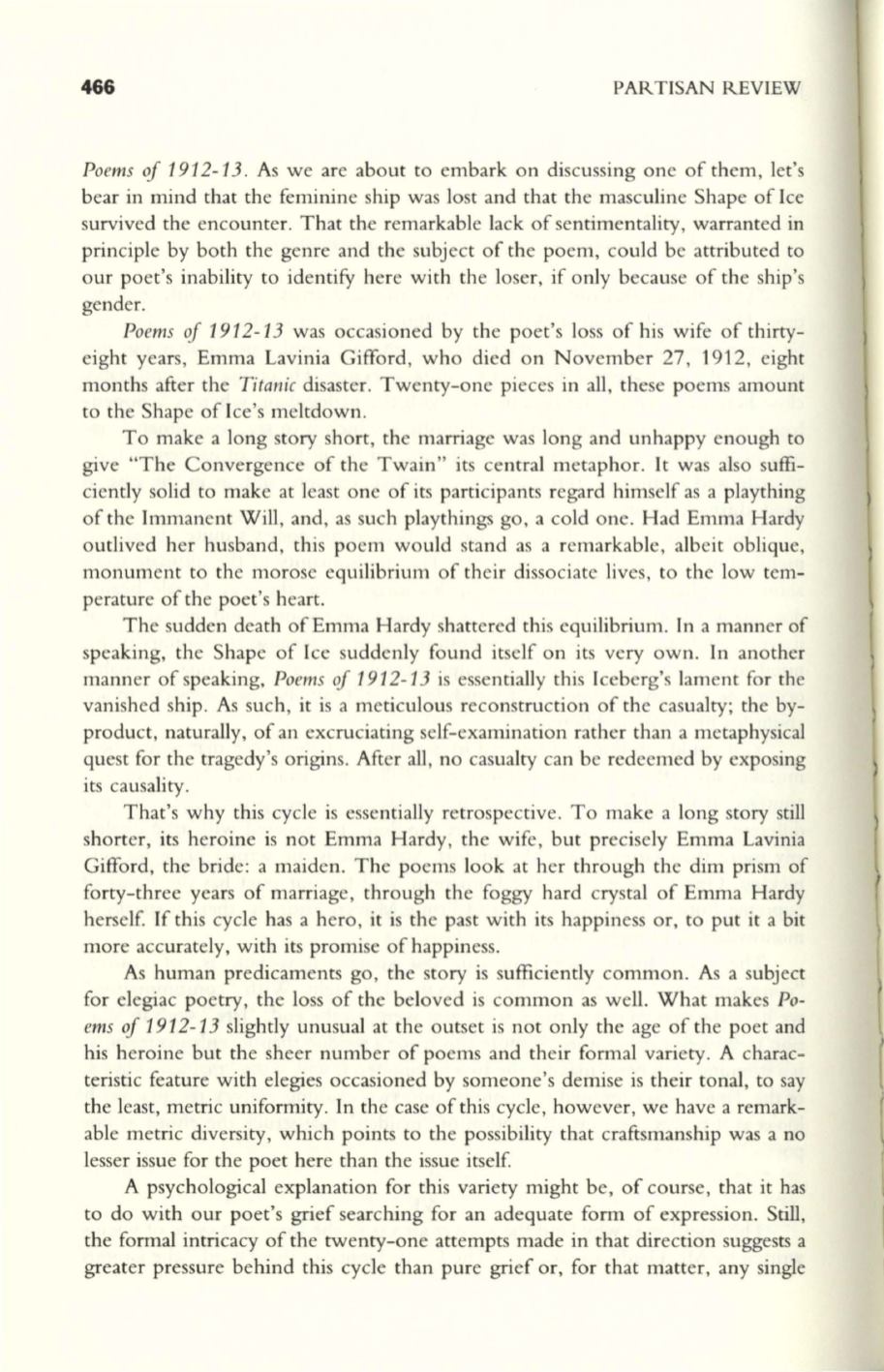
466
PARTISAN REVIEW
Poems of
1912-13.
As we are about to embark on discussing one of them, let's
bear in mind that the feminine ship was lost and that the masculine Shape of Ice
survived the encounter. That the remarkable lack of sentimentality, warranted in
principle by both the genre and the subject of the poem, could be attributed to
our poet's inability to identify here with the loser, if only because of the ship's
gender.
Poems of
1912-13
was occasioned by the poet's loss of his wife of thirty–
eight years, Emma Lavinia Gifford, who died on November 27, 1912, eight
months after the
Titanic
disaster. Twenty-one pieces in all, these poems amount
to the Shape of Ice's meltdown.
To make a long story short, the marriage was long and unhappy enough to
give "The Convergence of the Twain" its central metaphor. It was also suffi–
ciently solid to make at least one of its participants regard himself as a plaything
of the Immanent Will, and, as such playthings go, a cold one. Had Emma Hardy
outlived her husband , this poem would stand as a remarkable, albeit oblique,
monument to the morose equilibrium of their dissociate lives, to the low tem–
perature of the poet's heart.
The sudden death
of
Emma Hardy shattered this equilibrium. [n a manner of
speaking, the Shape of Ice suddenly found itself on its very own. In another
manner of speaking,
Poems of
1912-13
is essentially this Iceberg's lament for the
vanished ship. As such, it is a meticulous reconstruction of the casualty; the by–
product, naturally, of an excruciating self-examination rather than a metaphysical
quest for the tragedy's origins. After all, no casualty can be redeemed by exposing
its causality.
That's why this cycle is essentially retrospective. To make a long story still
shorter, its heroine is not Emma Hardy, the wife, but precisely Emma Lavinia
Gifford, the bride: a maiden. The poems look at her through the dim prism of
forty-three years of marriage, through the foggy hard crystal of Emma Hardy
herself. If this cycle has a hero, it is the past with its happiness or, to put it a bit
more accurately, with its promise of happiness.
As human predicaments go, the story is sufficiently common. As a subject
for elegiac poetry, the loss of the beloved is common as well. What makes
Po–
ems of
1912-13
slightly unusual at the outset is not only the age of the poet and
his heroine but the sheer number of poems and their formal variety. A charac–
teristic feature with elegies occasioned by someone's demise is their tonal, to say
the least, metric uniformity. In the case of this cycle, however, we have a remark–
able metric diversity, which points to the possibility that craftsmanship was a no
lesser issue for the poet here than the issue itself
A psychological explanation for this variety might be, of course, that it has
to do with our poet's grief searching for an adequate form of expression. Still,
the formal intricacy of the twenty-one attempts made in that direction suggests a
greater pressure behind this cycle than pure grief or, for that matter, any single


